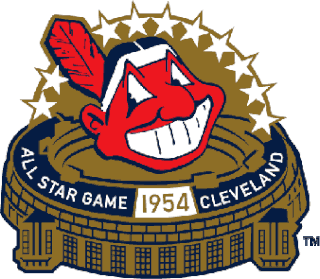In baseball, a sacrifice bunt is a batter's act of deliberately bunting the ball, before there are two outs, in a manner that allows a runner on base to advance to another base. The batter is almost always sacrificed but sometimes reaches base due to an error or fielder's choice. In that situation, if runners still advance bases, it is still scored a sacrifice bunt instead of the error or the fielder's choice. Sometimes the batter may safely reach base by simply outrunning the throw to first; this is not scored as a sacrifice bunt but rather a single.
In baseball, value over replacement player is a statistic popularized by Keith Woolner that demonstrates how much a hitter or pitcher contributes to their team in comparison to a replacement-level player who is an average fielder at that position and a below average hitter. A replacement player performs at "replacement level," which is the level of performance an average team can expect when trying to replace a player at minimal cost, also known as "freely available talent."
In baseball, a pinch hitter is a substitute batter. Batters can be substituted at any time while the ball is dead ; the manager may use any player who has not yet entered the game as a substitute. Unlike basketball, American football, or ice hockey, baseball does not have a "free substitution rule" and thus the replaced player in baseball is not allowed back into that game. The pinch hitter assumes the spot in the batting order of the player whom he replaces.

In baseball, the statistical summary of a game is reported in a box score. An abbreviated version of the box score, duplicated from the field scoreboard, is the line score. The Baseball Hall of Fame credits Henry Chadwick with the invention of the box score.
Led by new manager Billy Martin, the 1969 Minnesota Twins won the newly formed American League West with a 97–65 record, nine games over the second-place Oakland Athletics. The Twins were swept by the Baltimore Orioles in the first American League Championship Series.
The 1977 Minnesota Twins season was a season in American baseball. The team finished 84–77, fourth in the American League West.
The Colorado Rockies' 2004 season was the 12th for the Rockies. They tried to win the National League West. Clint Hurdle was the manager. They played home games at Coors Field. They finished with a record of 68-94, 4th in the NL West.
The Florida Marlins' 2002 season was the 10th season for the Major League Baseball (MLB) franchise in the National League. It would begin with the team attempting to improve on their season from 2001. Their manager was Jeff Torborg. They played home games at Pro Player Stadium. They finished with a record of 79-83, 4th in the NL East.
The 1922 St. Louis Cardinals season was the team's 41st season in St. Louis, Missouri and its 31st season in the National League. The Cardinals went 85–69 during the season and finished 3rd in the National League.
The 1982 Milwaukee Brewers season resulted in the team winning its first and only American League Championship.
The 1976 Cincinnati Reds season was a season in American baseball. The Reds entered the season as the reigning world champs. The Reds dominated the league all season, and won their second consecutive National League West title with a record of 102–60, best record in MLB and finished 10 games ahead of the runner-up Los Angeles Dodgers. They went on to defeat the Philadelphia Phillies in the 1976 National League Championship Series in three straight games, and then win their second consecutive World Series title in four straight games over the New York Yankees. They were the third and most recent National League team to achieve this distinction, and the first since the 1921–22 New York Giants. The Reds drew 2,629,708 fans to their home games at Riverfront Stadium, an all-time franchise attendance record. The Reds went 49–32 at home and 53–28 on the road in 1976. The 76 Reds are considered by many as one of the greatest baseball teams ever to play. The Reds scored 857 runs in 1976, easily the most in the league that season. Their +224 run differential was also the best in the league in 1976. As of 2017, the Reds are the only team in baseball history to sweep through an entire postseason since the addition of divisions. The Reds went 7–0 in postseason play in 1976.
The 1937 Philadelphia Athletics season involved the A's finishing 7th in the American League with a record of 54 wins and 97 losses.
The 1969 San Francisco Giants season was the Giants' 87th year in Major League Baseball, their twelfth year in San Francisco since their move from New York following the 1957 season, and their tenth at Candlestick Park. The team finished second in the newly established National League West with a record of 90–72, 3 games behind the Atlanta Braves, their fifth consecutive season of finishing second. The Giants set a Major League record which still stands for the most double plays grounded into by a team in a single game, with 7 against the Houston Astros on May 4.
A game-winning RBI is the run batted in (RBI) that is credited to the batter whose plate appearance is responsible for bringing his team ahead for the final time in the game. The statistic was used in Major League Baseball (MLB) from 1980 to 1988.

The 1954 Major League Baseball All-Star Game was the 21st playing of the midsummer classic between the all-stars of the American League (AL) and National League (NL), the two leagues comprising Major League Baseball. The game was held on July 13, 1954, at Cleveland Municipal Stadium in Cleveland, Ohio the home of the Cleveland Indians of the American League.




